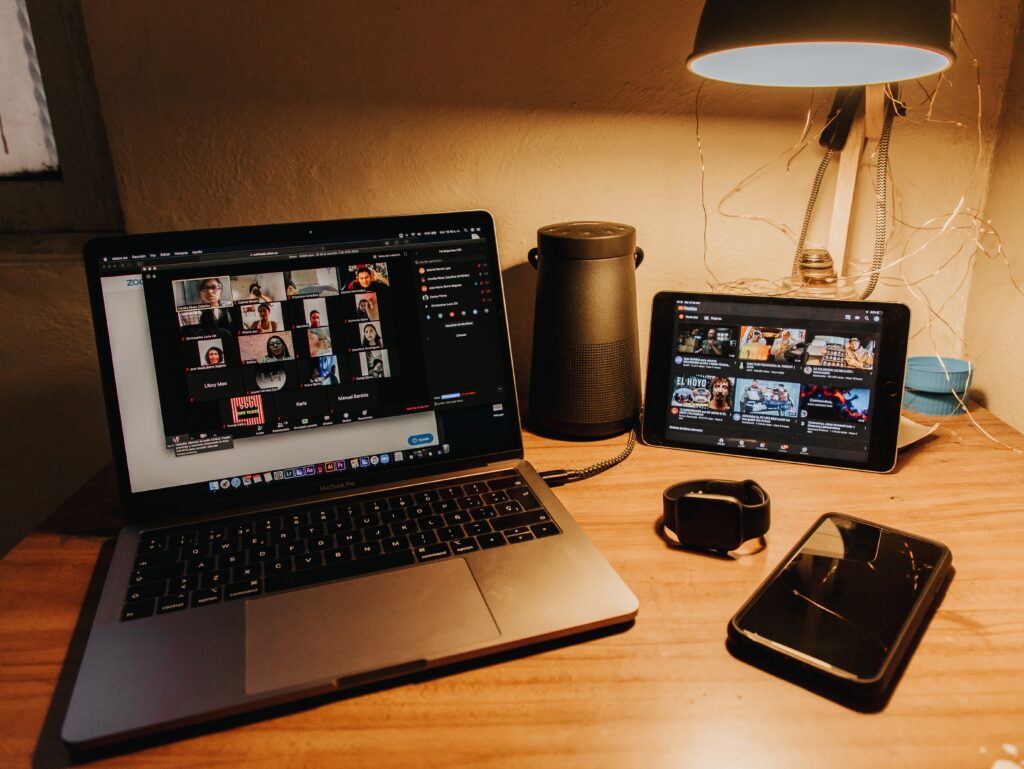As video recordings become increasingly central to university teaching, it’s good practice to evaluate them on an ongoing basis. The videos you made a year ago might be OK for one or more iterations of your course, but they can quickly become outdated. And if students aren’t watching your videos, this might be a sign that it’s time to revisit. Our blog post is a reminder of what you might consider when you evaluate your current videos, in order to ensure they are appropriate for use in the latest version of your course.
1. Is video the right medium for the targeted material and purpose?

When done well, recorded “lectures” can increase your human presence in a course, and open new doorways to your course content.
But videos have their limits as well. For some students, especially those who are more advanced in the subject matter, watching a video can take more time than reading a text with the same information. In addition, the linear structure of video makes navigation through complex material more difficult. Struggling through a video filled with concentrated technical information, for example, will frustrate students needing to continually replay or fast-forward in order to locate an exact moment of the recording.
In summary: use of video content should be a conscious choice targeting specific purposes, not a default mode of delivery. Not every student benefits from its use to the same degree.
2. Is the video still relevant for what you’re teaching?
What has changed recently in your subject matter? When working with texts, it’s relatively easy to switch out an article or book with a new one. With video the renewal process can be more complicated because of the time required to make and edit new recordings. If you lack the time to update a video for the upcoming offering of your course, there’s nothing wrong with replacing the video with a more relevant text or web site, until you can find the time to make a new recording.
And before you spend time re-recording, see if you can salvage the current recording by editing it and inserting new transitions, or by re-framing it with a new introduction to provide students with context.
Looking ahead: Design any new videos in ways to make them re-usable. Build them using short stand-alone clips; or sections that can be easily removed, re-recorded, and re-inserted without disrupting the entire video.
3. Are your videos sufficiently engaging for the population of students in your course?
Both VIULearn and VIUTube contain tools that allow you monitor student interactions with specific components of course content. In VIULearn you have Content Tracking, and Class Progress to see if your students are spending time with your videos.
Accessing View Analytics in VIUTube
- Access VIUTube and locate the video in your collection
- Hover your mouse over the video and click More…
- Select Analytics on the left side menu
- View the data. You can see basic information about how many people viewed your video and whether they viewed the whole video or only certain segments.
In VIUTube, similarly, you can use a set of analytics to track the videos you have uploaded to your account. Data points include items such as…
- Views: How many times your video has been played.
- Unique Views: How many separate individuals have played the video.
- Total Played Length: How many minutes of the video have been played by a user.
When these data indicate that high numbers of students are failing to watch, that’s a sign that something needs to change. Here are some areas to investigate in your reflection:
- Relevance to course goals and expectations. Students are busy, and therefore can be pragmatic. If they believe skipping a video will have no impact on course outcomes or grade, they are more likely to do so. For this reason, each of your videos needs to be fully contextualized as to its purpose, so that students will have reason to watch.
- Placement in the activity sequence. Videos whose content is closely tied to what happens before and after watching are more likely to be viewed. Try wrapping your videos with activities such as these:
- A brief inquiry centered on the topic, that students do on their own before watching the video
- Guiding questions to investigate while watching
- Pre and post “fun” quizzes to measure gains in understanding
- Questions to reflect on before and/or after watching
- Pace. Videos that have dead zones will tax students’ patience. Edit out of your recordings any parts that do not advance your purpose. It’s good practice to develop an outline or script when you record, to keep yourself on track.
- Density. Video is not an ideal medium for transferring high volumes of information to students. Keep an eye on the “cognitive load” of your recordings. You might need to spread your content into bite-size pieces over several clips—to make it more manageable.
4. Is the video edited to an optimal length and format for user-friendliness?
Research on student attention span is abundant: students are likely to disengage from a video presentation after about 5 minutes. You can mitigate this problem with some basic editing techniques:

- Cut a long video into shorter clips of a few minutes each.
- Or break up a longer video into sections with clear transitions among the sections. Insert titles, headings, or questions, to guide students’ attention.
- Insert short quiz questions into the middle of the video to help students check their understanding.
- Give students a lead-in task to prepare them for watching the video. (In VIULearn you can set up a “Release Condition” where students have to complete the task before they gain access to the video.)
- Wrap each video segment with clips or texts/titles that personalize and frame the journey, such as previews, introductions and summaries.
Questions to consider in selecting and making videos for use in a course
Audience: are my students at a level where they will benefit from content presented in video format?
Type of content: does my content lend itself to video presentation, or would it be easier to access and understand in some other medium (text, images, etc.)
Pre-existing resources: Do videos of the kind I need already exist? Are their existing pod-casts, TED Talks, etc. that I could link to instead of producing materials myself?
Production time: If I need to make recordings, do I have the time, skill and patience required to record and edit the video? (If not, postpone this work until you do.)
Equipment: Do I have what is required to produce a video of sufficiently high quality so as not distract or annoy students? Microphone; camera; capacity to edit and add text, additional sound or other effects.
Manage and Share Video with the New VIUTube
The new VIUTube is now available for creating, editing and sharing videos. CIEL staff are working with our new vendor to transfer existing videos to the new platform. If you will be reusing videos you created on the old VIUTube platform, CIEL staff is happy to help you update your media inside your VIULearn course.
Have questions or want to request help using the new VIUTube? Please contact us at learnsupport@viu.ca